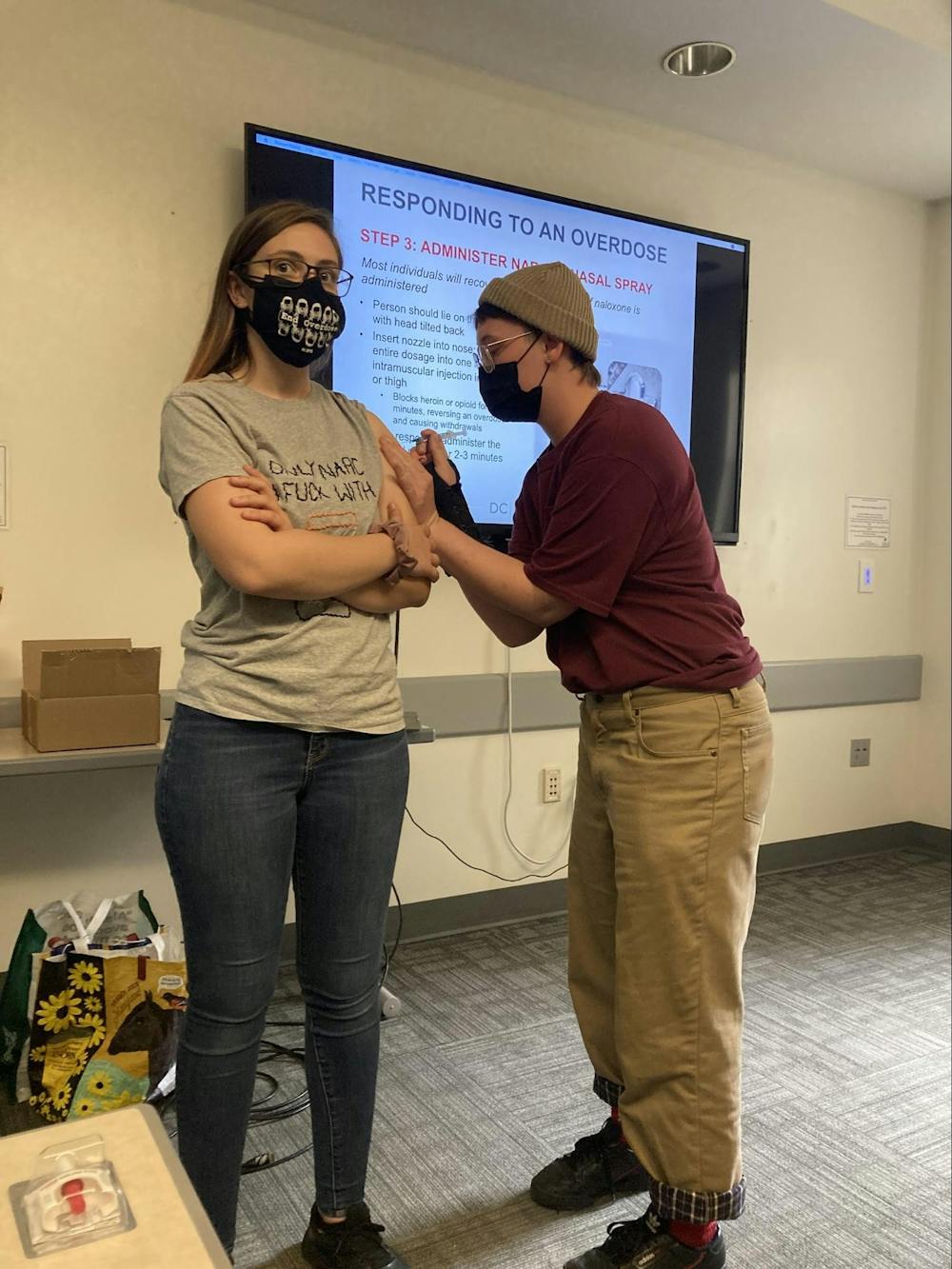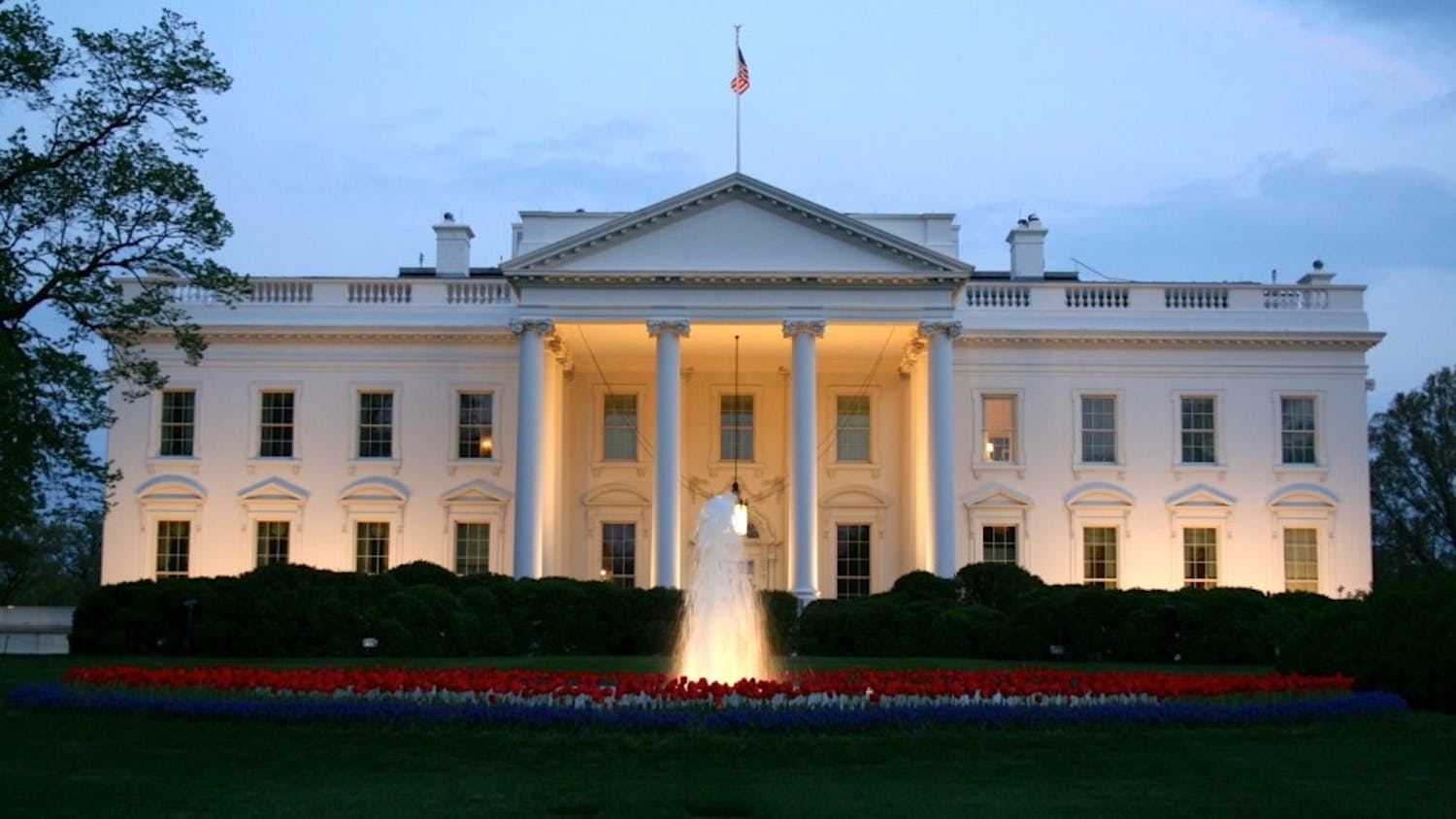Students learned about drug use and harm reduction at a Narcan training event co-hosted by American University’s Health Promotion and Advocacy Center and the DC Wards 3 & 4 Prevention Center Oct. 28.
Abigail Goldner Morris, a senior studying American studies and women’s, gender, and sexuality studies, presented the event. Morris works as a housing and outreach worker for HIPS, a harm reduction group based in D.C. The training covered the history of opioids, ways to help those struggling with addiction and how to administer Narcan during an overdose.
Morris discussed the rise in opioid-related overdoses and deaths in D.C., a trend that she said is the result of many opioids now being mixed with fentanyl.
“Right now in D.C., a lot of drugs are spiked with fentanyl,” Morris said at the event. “It’s one of the things causing the opioid overdose and death epidemic in D.C. The quality and strength of the D.C. supply of drugs has changed … and it’s absolutely fatal.”
According to the National Institute on Drug Abuse, opioids were involved in 46,802 overdose deaths in 2018, and deaths from synthetic opioids in D.C. rose to more than 28,000. Signs of an overdose include unresponsiveness, difficulty breathing, small pupils and cold skin.
One of the most effective ways to reverse an overdose is by administering Narcan, also known as naloxone, which acts as an opioid antagonist by attaching to receptors and blocking the effects of other opioids. The drug can be used through a nasal spray or needle, and typically lasts in the body for about 30 to 90 minutes.
However, Morris said that harm reduction goes beyond just administering this life-saving drug. Taking measures to prevent overdoses such as making drug-testing kits more widely available and creating supervised consumption sites to reduce the risks of using drugs alone are also important.
“Harm reduction is a really radical practice rooted in community,” Morris said. “Harm reduction does not minimize or ignore the dangers of drug use, but it also doesn’t have an agenda. Any positive change is a good thing.”
Morris also spoke about the role that systemic racism plays in the opioid crisis, highlighting the disproportionate effect that this epidemic has had on D.C.’s Black community.
“Black folks are way more likely than any other demographic to be dying of opioid overdoses,” she said. “This is the reality of systemic racism and poverty in D.C.”
The event was also hosted by Nadine Parker, director of the National Capital Coalition to Prevent Underage Drinking, who emphasized looking at the whole picture of opioid use to support people fighting addiction.
“At the prevention center, we look at changing the way people think about substance use,” Parker said. “Most people don’t understand what opioids are. People don’t know whether or not they have the ability to become addicted. Opioids are the hardest drug abuse to kick.”
School of Public Affairs sophomore Helena Milburn said that Narcan training is important for teaching students to handle potential emergencies on campus.
“I think it’s good to know what to do, or at least have someone that knows, in a situation like that, just in case,” Milburn said. “I feel much more prepared to deal with an overdose situation than I did before.”
Morris said that the key to stopping opioid overdoses and deaths is deconstructing the stigma around addiction.
“Even if you don’t think [opioid use] is in the realm of possibility in your communities, it often is because people don’t want to talk about it,” she said. “That’s why it’s so important to break stigmas, because stigma kills people everyday.”





